
TO TAKE PHOTOS OF POLAR BEARS in Wapusk National Park, Man., Daisy Gilardini has to go on a journey. In early spring, after a flight to Winnipeg, then to Churchill, Gilardini takes a train south toward Chesnaye, about 40 kilometres from Churchill as the raven flies. In the middle of nowhere, now in pitch darkness, the train stops. In the bone-chilling cold of a -40 C Arctic night, northern lights swirl overhead as she hauls her bags of photography gear off the train. From there, it’s a bumpy drive over frozen tundra to Wat’Chee Lodge — the only licensed operator that can take people to see polar bears in Wapusk, the southernmost polar bear denning area in the world.
Gilardini has been making this trip since a holiday to Canada in November 1999, when she was working as an accountant in Switzerland. Her first sight of polar bears brought tears to her eyes. She fell in love and has since followed her passion for the polar regions all over the Arctic. She became a full-time photographer in 2006 and, just under a decade later, photographed a mother polar bear and her cubs emerging from their winter den for the first time.
Mother bears in Wapusk dig their maternity den in October, usually in the snow but now, more often, in the soil. She gives birth to her cubs a month later, and the little family spends the winter in the den. The den is warm, dark and cosy, with only enough space for the mother to sleep and turn over. There is not enough room for her cubs to play, to fight, to explore. They feed and grow and sleep.
Diese Geschichte stammt aus der November/December 2020-Ausgabe von Canadian Geographic.
Starten Sie Ihre 7-tägige kostenlose Testversion von Magzter GOLD, um auf Tausende kuratierte Premium-Storys sowie über 8.000 Zeitschriften und Zeitungen zuzugreifen.
Bereits Abonnent ? Anmelden
Diese Geschichte stammt aus der November/December 2020-Ausgabe von Canadian Geographic.
Starten Sie Ihre 7-tägige kostenlose Testversion von Magzter GOLD, um auf Tausende kuratierte Premium-Storys sowie über 8.000 Zeitschriften und Zeitungen zuzugreifen.
Bereits Abonnent? Anmelden
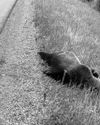
ANIMAL XING
THIS PAST SUMMER AN AMBITIOUS WILDLIFE UNDER/OVERPASS SYSTEM BROKE GROUND IN B.C. ON A DEADLY STRETCH OF HIGHWAY JUST WEST OF THE ALBERTA BORDER. HERE’S HOW IT HAPPENED.
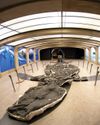
Unearthing a giant
Almost 30 years ago, paleontologist Elizabeth “Betsy” Nicholls made a discovery of colossal proportions
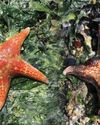
WE DID THIS
AS THE IMPACTS OF GLOBAL WARMING BECOME INCREASINGLY EVIDENT, THE CONNECTIONS TO BIODIVERSITY LOSS ARE HARD TO IGNORE. CAN THIS FALL’S TWO KEY INTERNATIONAL CONFERENCES POINT US TO A NATURE-POSITIVE FUTURE?
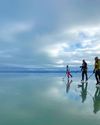
The COOLEST COUNTRY
“The coolest country” celebrates the wonders of winter with an all-Canadian theme. The 20-page travel planner includes a bucket list from travel writer Robin Esrock, steamy spa ideas, ice fishing destinations, festival fun, northern itineraries and more!
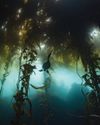
KEEPER of the SEA
FROM BEING LABELLED DEVIL’S APRON BY FRUSTRATED FISHERMEN TO BEING LAUDED AS A SUSTAINABLE FOOD SOLUTION: HOW KELP’S POTENTIAL IS BEING REALIZED, JUST AS SCIENTISTS LEARN IT’S DECLINING
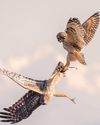
WILD THINGS
WILD CANADIAN GEOGRAPHIC PRESENTS THE WINNERS OF ITS ANNUAL CANADIAN WILDLIFE PHOTOGRAPHY OF THE YEAR COMPETITION

AN EMPTY LANDSCAPE
AFTER MORE THAN A MILLION YEARS ON EARTH, CARIBOU ARE UNDER THREAT OF GLOBAL EXTINCTION. THE PRECIPITOUS DECLINE OF THE ONCE MIGHTY HERDS IS A TRAGEDY THAT IS HARD TO WATCH — AND EVEN HARDER TO REVERSE.
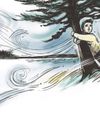
NORTHERN EXPOSURE
BON INTO A CARIBOU-HUNTING CREE FAMILY IN NORTHERN MANITOBA, ACCLAIMED PLAYWRIGHT AND NOVELIST. TOMSON HIGHWAYS PAYS TRIBUTE TO THE MAGICAL WORLD OF HIS CHILDHOOD IN PERMANENT ASTONISHMENT

INTO THE ARCTIC
CANADIAN PAINTER AND FILMMAKER CORY TRÉPANIER EXPLORES THE SUBLIME AND RAPIDLY CHANGING CANADIAN ARCTIC

Under the ice
Until the last decade, we knew little about what lay beneath the Arctic ice. Now scientists and explorers are shedding light on this vanishing world.